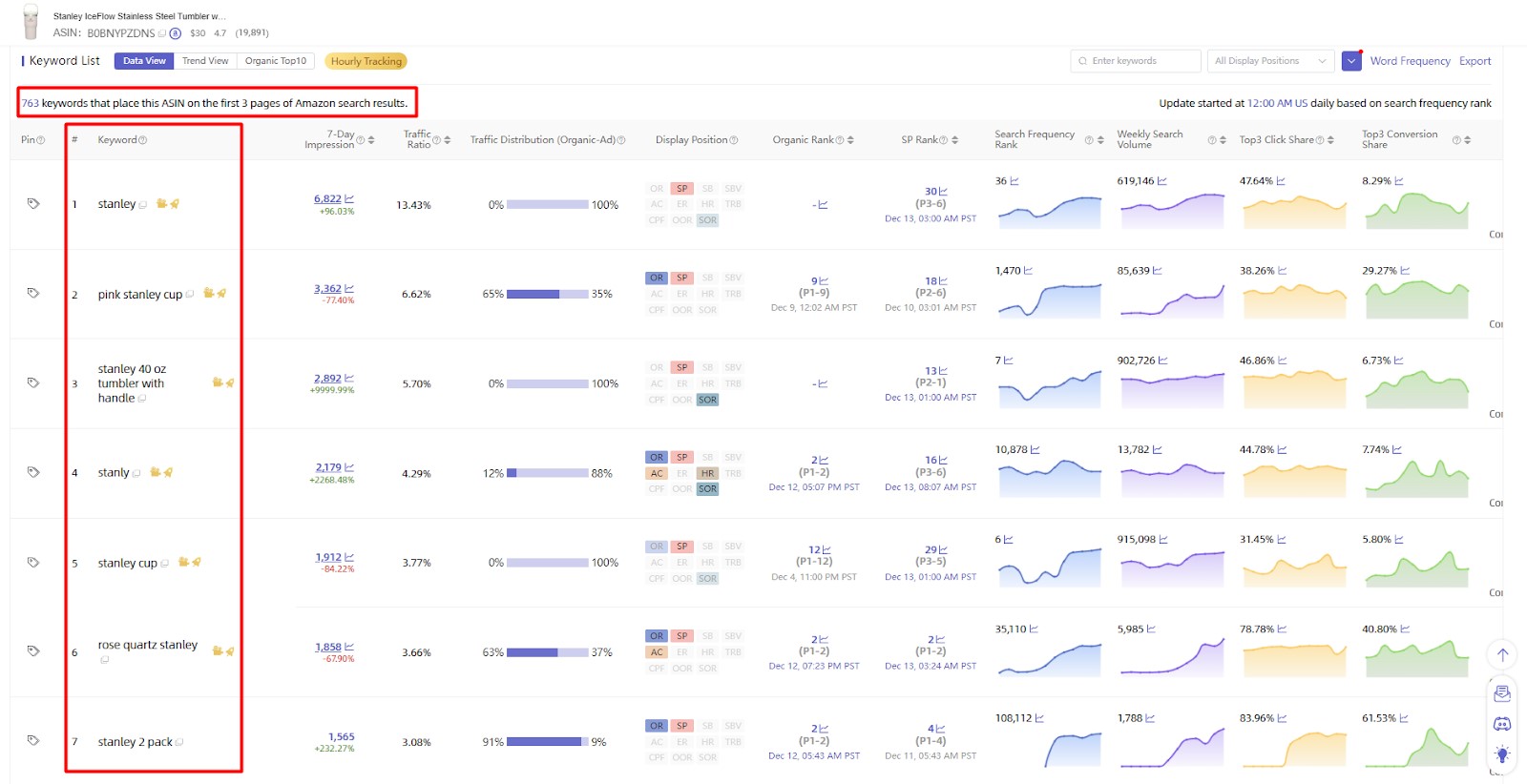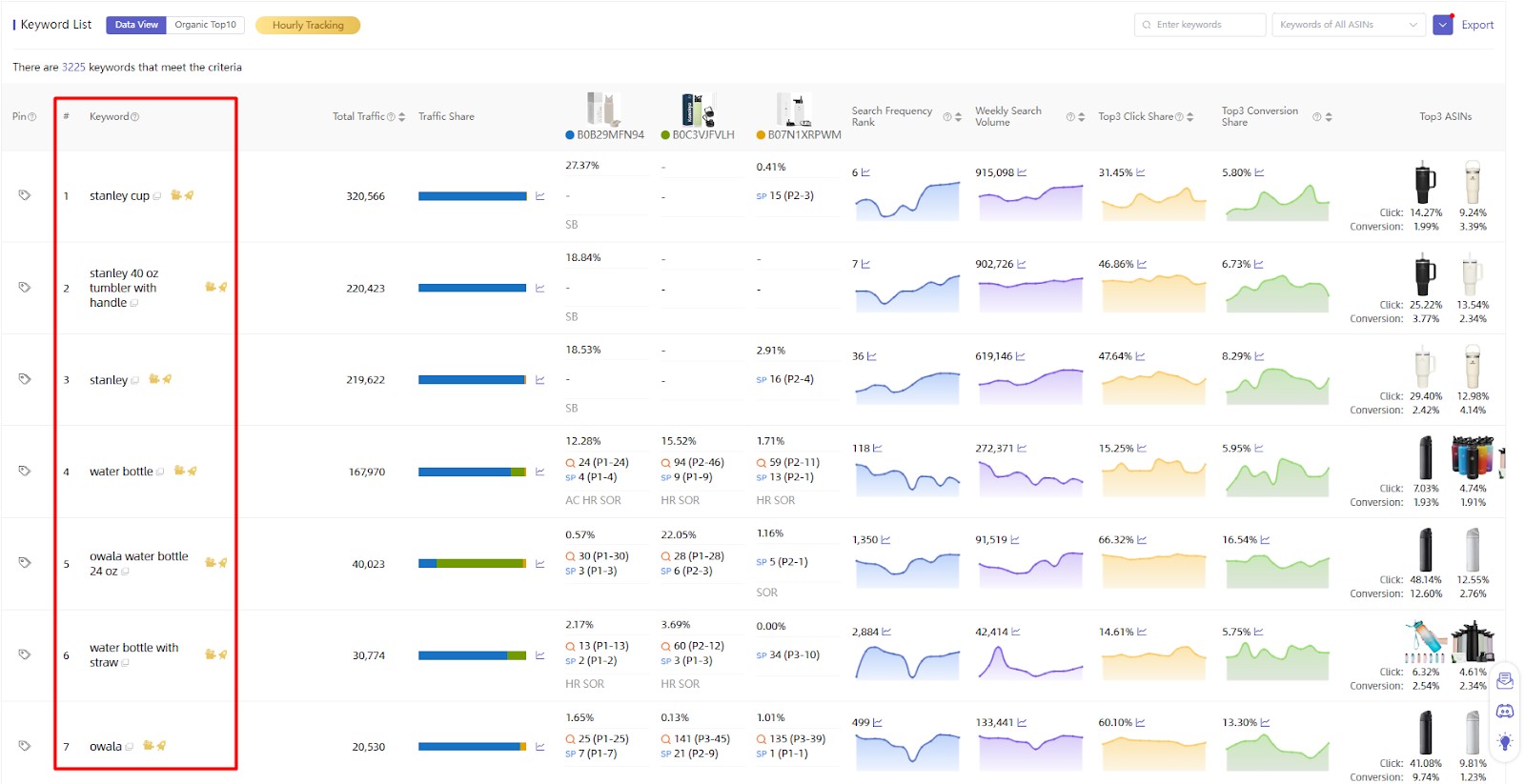Amazon Reverse ASIN Lookup - Find Amazon Competitor Keywords

If you’re selling on Amazon, staying ahead isn't just about having a good product—it's about understanding the competition. Competitor analysis is an essential strategy for succeeding on Amazon. You gain a crucial edge by keeping a close eye on what others are doing and understanding your customer base. Tracking and analyzing your competitors can turn their insights into your advantage, helping you stand out in the Amazon marketplace. In this article, we will explore how can you find your competitor keywords. Discover your competitors’ top-performing keywords and use them to your advantage.
A quick view into the article:
- What is Amazon Reverse ASIN Lookup?
- How Does Reverse ASIN Lookup Work?
- How to Find Amazon Competitor Keywords
- Benefits of Using Reverse ASIN Lookup
- Common Mistakes to Avoid
What is Amazon Reverse ASIN Lookup?

The Reverse ASIN Lookup is a technique used by Amazon sellers to find the keywords that are driving traffic to their competitors' products. When sellers employ the Reverse ASIN Lookup, they reverse-engineer the keyword research process. By selecting a target ASIN - typically belonging to a successful competitor's product - and using specialized tools, sellers can find the keywords intricately associated with the chosen ASIN. With Reverse ASIN Lookup, sellers can make informed decisions to enhance their product listings, advertising campaigns, and overall market positioning. It's a strategic move that goes beyond guesswork, allowing sellers to refine their approach based on real, tangible insights gathered from the competitors.
How Does Reverse ASIN Lookup Work?
In the Reverse ASIN Lookup process, you need to find out your competitors' ASINs first. While you use Reverse ASIN Tools, these tools systematically scrape data from Amazon's database and find comprehensive search terms that are intricately linked to the product identified by the chosen ASIN. These search terms are the keywords that potential customers are actively using to discover and engage with similar products on the platform. By understanding which specific terms are closely associated with a successful product, sellers can tailor their listings, descriptions, and advertising campaigns to align with the preferences and behaviors of their target audience.
How to Find Amazon Competitor Keywords
Finding Amazon competitor keywords through Reverse ASIN Lookup involves a strategic process. Here's a step-by-step guide:
Identify Competitor's ASIN: Start by identifying a successful product on Amazon that closely aligns with your own. Look for products with a high sales rank and positive reviews. Collect the ASINs of those competitors.
Use Reverse ASIN Tools: Choose a reliable Reverse ASIN tool for identifying competitors' keywords. These tools are designed to uncover valuable insights about a product's keywords. Input the ASIN you extracted from your competitor's product listing into the chosen tool. The tool will then initiate a Reverse ASIN Lookup, extracting data related to the keywords associated with that particular product.
ASINSIGHT ASIN Research Tool is all you need to get further ahead of your Amazon competition. With this tool, you can extract all the best-performing keywords of your given ASIN and discover the top keywords they rank for.
Simply enter your competitor product ASIN and then enter it into the ASIN Research tool. With this Reverse ASIN Lookup, you can find Organic and Ad Traffic Score and Diagnose all the data.

Scroll down and you will see the keywords that place this ASIN on the first 3 pages of Amazon search results. You will also get the 7-day Impression, Traffic Ratio, Ranking, etc. for this particular ASIN.

What’s more interesting is that you can also do Multi-ASIN Analysis with ASINSIGHT and get a 7-day Traffic Score, Keyword Count, and Traffic Distribution for those ASINs.

Scroll down and you will find the keywords for which the ASINs have appeared on the first 3 pages of search results in the past 30 days. If the ASIN hasn't appeared on the first 3 pages for the keyword then it will be shown as 0.

Analyze and Prepare Keyword List: Analyze the generated keyword list thoroughly. Identify the high-performing keywords that align with your product and target audience. Always pay close attention to high-volume and relevant keywords that can potentially boost your own product's visibility. This way you can find your competitors' keywords and prepare your list of high-ranking keywords.
Benefits of Using Reverse ASIN Lookup
The Reverse ASIN Lookup strategy is essential for informed decision-making. This will guide you towards a more successful and distinctive presence in the Amazon marketplace. The benefits of using Reverse ASIN Lookup are -
- Strategic Keyword Optimization: With insights into your competitors' top-performing keywords, the Reverse ASIN Lookup helps you to strategically optimize your product listings.
- Enhanced Advertising: Reverse ASIN Lookup finds out the keywords that resonate most with your target audience. With these valuable keywords, you can run more effective and targeted advertising campaigns.
- Product Differentiation: The Reverse ASIN Lookup doesn't just reveal keywords; it finds opportunities for product differentiation. Understanding the keywords associated with competing products allows you to identify gaps in the market or areas where your offering can stand out.
Common Mistakes to Avoid

When engaging in Reverse ASIN Lookup, it's crucial to avoid the common mistakes that sellers make often. One frequent mistake is overlooking the power of long-tail keywords. Focusing solely on broad terms may increase competition, whereas long-tail keywords can attract more targeted and convertible traffic. Another misstep is neglecting regular updates. Amazon's algorithms and customer behavior evolve, so consistently refreshing your keyword strategy is essential.
Final Thoughts
Identifying competitor keywords with Reverse ASIN Lookup is one of the best strategies to stay ahead of the competition. Sellers looking to gain a competitive edge on the platform should definitely use this strategy. By unraveling the keywords that drive success for competitors, sellers can refine their own strategies, optimize listings, and ultimately stand out in the crowded Amazon marketplace. Try out this insightful technique to transform your Amazon competitor analysis into a powerful driver of success.